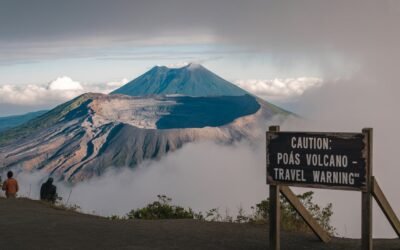snow storm: Nature’s Fierce Winter Power Explained

A snow storm can be both beautiful and dangerous. These powerful winter events happen when cold air meets moisture in the atmosphere, causing snow to fall heavily and quickly. Often, strong winds blow the snow around, making it hard to see and even harder to travel. Understanding how snow storms form, what effects they have, and how people stay safe during them is important for anyone who lives in areas where winter weather can be intense.
What Is a Snow Storm?
A snow storm is more than just snow falling from the sky. It usually includes strong winds, cold temperatures, and heavy snowfall that lasts for hours or even days. In some cases, snow storms can turn into blizzards, which are even more dangerous because of low visibility and freezing conditions. Most snow storms form in colder regions and can occur anywhere from late fall to early spring.
How Snow Storms Form
Snow storms form when warm, moist air rises and meets cold air in the upper atmosphere. As the moist air cools, the water vapor turns into ice crystals. These crystals stick together and fall to the ground as snowflakes. When this process happens over a large area and continues for a long time, a snow storm is created. Additionally, the presence of low-pressure systems helps pull in more air, adding energy to the storm and making it stronger.
Types of Snow Storms
There are several types of snow storms, each with different characteristics:
-
Blizzards: These storms have strong winds (over 35 mph) and low visibility for at least three hours.
-
Lake-Effect Snow: Happens when cold air moves over a warmer lake, picking up moisture and dropping snow on the downwind side.
-
Nor’easters: These coastal storms bring heavy snow, rain, and wind to the northeastern United States.
-
Snow Squalls: Short bursts of intense snowfall with strong winds, often causing whiteout conditions quickly.
Where Snow Storms Commonly Happen
Snow storms are more common in places where cold air masses and moisture are often present. Areas such as the northern United States, Canada, Northern Europe, and parts of Asia frequently experience strong snow storms. In the U.S., states like New York, Minnesota, and Colorado often prepare for major snow events every winter.
What Happens During a Snow Storm
When a snow storm hits, the environment changes rapidly. Snow begins to pile up on roads, rooftops, and trees. Temperatures drop, and the wind picks up. Streets can become icy and dangerous, while power lines might break from the weight of snow or fallen trees. Schools and businesses are often closed. Meanwhile, emergency services prepare to help people in need, and snowplows work hard to keep roads clear.
Dangers and Risks of Snow Storms
Although snow storms look pretty, they can be very dangerous. Some of the most common risks include:
-
Car Accidents: Slippery roads and poor visibility lead to crashes.
-
Power Outages: Heavy snow and wind can knock out power lines.
-
Frostbite and Hypothermia: People stuck outside in the cold can suffer serious health problems.
-
Roof Collapses: Too much snow on rooftops can cause buildings to cave in.
-
Falling Trees and Branches: Snow and ice add weight to trees, causing them to fall.
How to Prepare for a Snow Storm
Preparation is key to staying safe. Here are some steps families and communities take before a snow storm arrives:
-
Stock Up on Supplies: Water, food, medicine, batteries, flashlights, and blankets should be ready.
-
Stay Informed: Weather alerts on phones or radios help people know what to expect.
-
Check Heating Systems: Homes must be warm, so heaters and fireplaces are checked.
-
Prepare Vehicles: Cars should have snow tires, full gas tanks, and emergency kits.
What to Do During a Snow Storm
When a snow storm is happening, people are advised to stay indoors. If travel is not necessary, it should be avoided. Those who must go outside should dress in layers, wear waterproof boots, and cover all exposed skin. Staying connected with family and emergency services is also important. In case of a power outage, using candles safely or having backup power sources is crucial.
How Communities Respond to Snow Storms
City and town officials take many steps to keep everyone safe during snow storms. Snowplows clear main roads first, followed by smaller streets. Salt and sand are spread to prevent ice buildup. Emergency shelters are opened for those without heat or safe shelter. Firefighters, police, and paramedics are on high alert in case of emergencies. Communication between residents and local governments plays a vital role.
Positive Effects of Snow Storms
Surprisingly, snow storms can have some good effects:
-
Water Supply Boost: Snow melts into rivers and lakes, helping areas with dry seasons.
-
Pest Control: Cold weather can reduce harmful insect populations.
-
Soil Health: Snow protects the ground, keeping it from freezing too deeply and helping plants grow later.
-
Community Spirit: Neighbors often help each other shovel snow, share supplies, or check on the elderly.
Fun in the Snow
After the storm passes, many people enjoy the snowy landscape. Activities include:
-
Sledding: Kids and adults race down hills.
-
Building Snowmen: Creative snow sculptures decorate yards.
-
Snowball Fights: Friendly battles create lasting memories.
-
Snowboarding and Skiing: Sports lovers hit the slopes for fun and exercise.
Climate Change and Snow Storms
Scientists are studying how global warming affects snow storms. While warmer air might reduce snowfall in some places, others could see stronger storms. This is because warmer air holds more moisture, which can lead to heavier snow when temperatures drop. Understanding these changes helps experts plan better and protect communities more effectively.
Technology and Snow Storm Prediction
Today, advanced weather technology allows meteorologists to predict snow storms days in advance. Satellites, radar, and computer models track storms and issue warnings early. This helps people prepare sooner and reduce risks. Mobile apps, social media, and emergency broadcasts spread alerts quickly, keeping everyone informed.
Staying Safe After a Snow Storm
Even after the snow stops falling, dangers can remain. Black ice on roads, weakened trees, and slippery sidewalks still pose risks. Cleanup takes time, so patience is essential. Neighbors should check on each other, especially the elderly and those with health issues. Slowly returning to normal helps everyone stay safe and calm.
Real-Life Snow Storm Stories
-
The Blizzard of 1978: One of the worst snow storms in U.S. history, it buried parts of the Northeast in over 30 inches of snow.
-
Winter Storm Uri (2021): This storm hit Texas hard, causing widespread power outages and reminding people that snow storms can surprise even warm regions.
-
The Great White Hurricane (1888): A historic blizzard that shut down New York City and brought life to a standstill for days.
Important Safety Tips
-
Always keep extra blankets and clothing in your car.
-
Stay inside unless it’s absolutely necessary to go out.
-
Avoid using open flames indoors without proper ventilation.
-
Never run a generator inside your home or garage.
-
Listen to local news and follow advice from officials.
Conclusion
A snow storm is a powerful force of nature that can transform the world into a white wonderland. However, it can also bring serious dangers if people are not prepared. Thankfully, with the right knowledge, tools, and attitude, these winter storms can be handled safely and even enjoyed. Whether it’s by building snowmen or staying warm indoors with family, every snow storm brings a chance to learn, connect, and grow stronger together.











